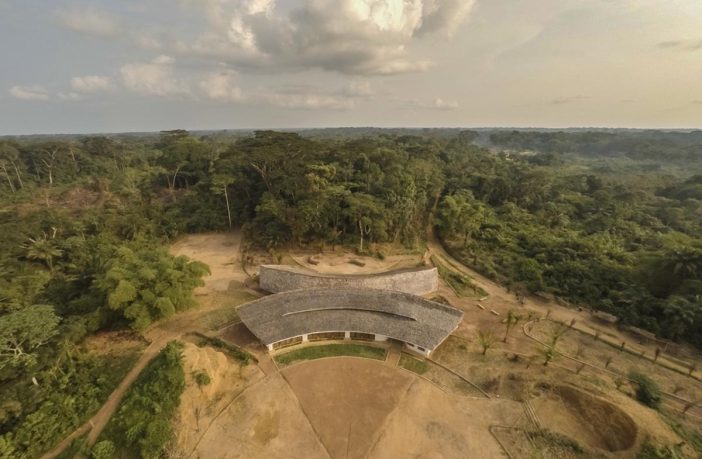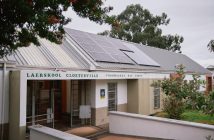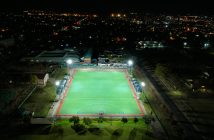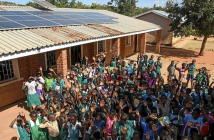- The Ilima community is one of the most isolated in the world, located deep in the jungle of the Democratic Republic of the Congo.
- For generations, the people have coexisted with endangered wildlife in the surrounding forest, but as the pace of development has increased, this fragile ecosystem has suffered.
The African Wildlife Foundation recognized Ilima as one of thirty-five locations in need of investment as part of their African Conservation Schools initiative. The Conservation Schools amplify the foundation’s mission of protecting people and wildlife by focusing specifically on primary education and functioning as a paradigm for how wildlife conservations can improve lives through community empowerment.
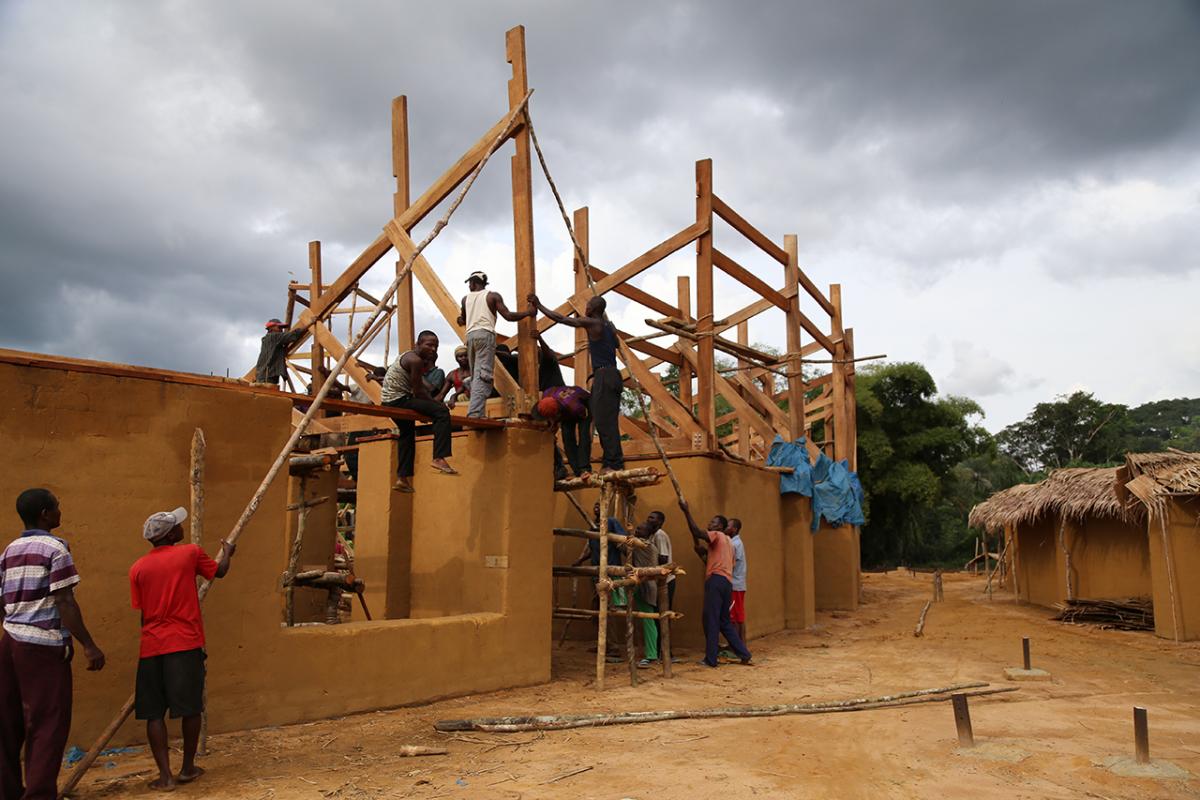
Hoisting the trusses. Image credit: MASS
The Ilima village sits between two landscapes: farmland and natural habitat. In the design of the campus, MASS (Model of Architecture Serving Society) identified an opportunity to connect these two landscapes by situating the school in the center, as a bridge between humans and wildlife. To reinforce this relationship and create thresholds between these landscapes, additional programming is placed around the school, including a dedicated entryway, community space, outdoor learning areas, and play spaces. Inside, the school has six classrooms, an office, reception area, and library.
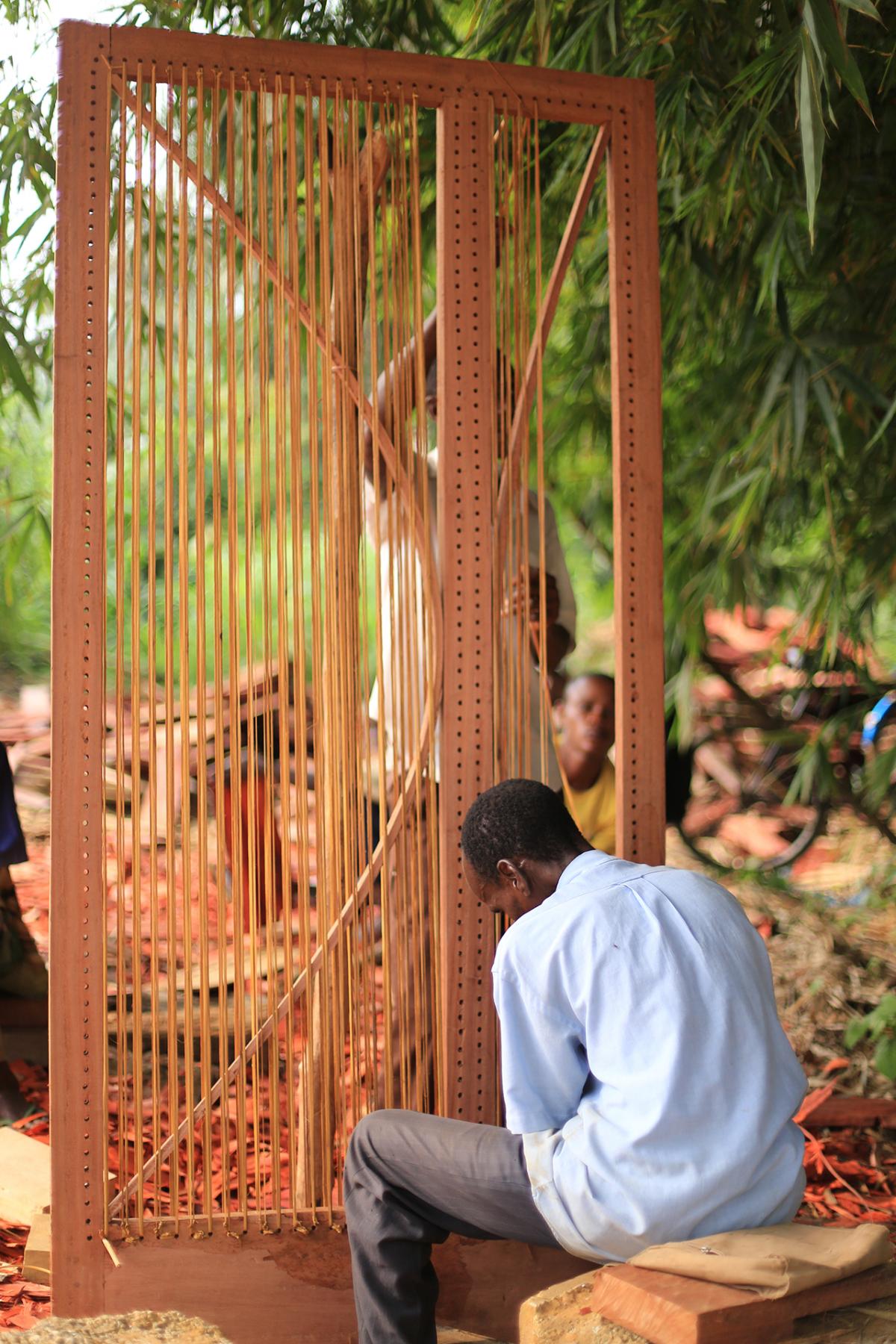
Organic materials used to craft doors and screens made onsite. Image credit: MASS
The school’s construction was grounded in the belief that conservation and development are most feasible when communities are given the opportunity to develop in harmony with surrounding natural environments. The construction employed custom shingles, mud bricks, and beams made exclusively from local materials harvested on and around the site. The school’s play equipment is also made from local materials using local techniques. Educational signage throughout the landscape turns every part of the school and campus into an opportunity for discovery and learning for the students, with the African Wildlife Foundation’s curriculum addressing strategies for wildlife conservation.
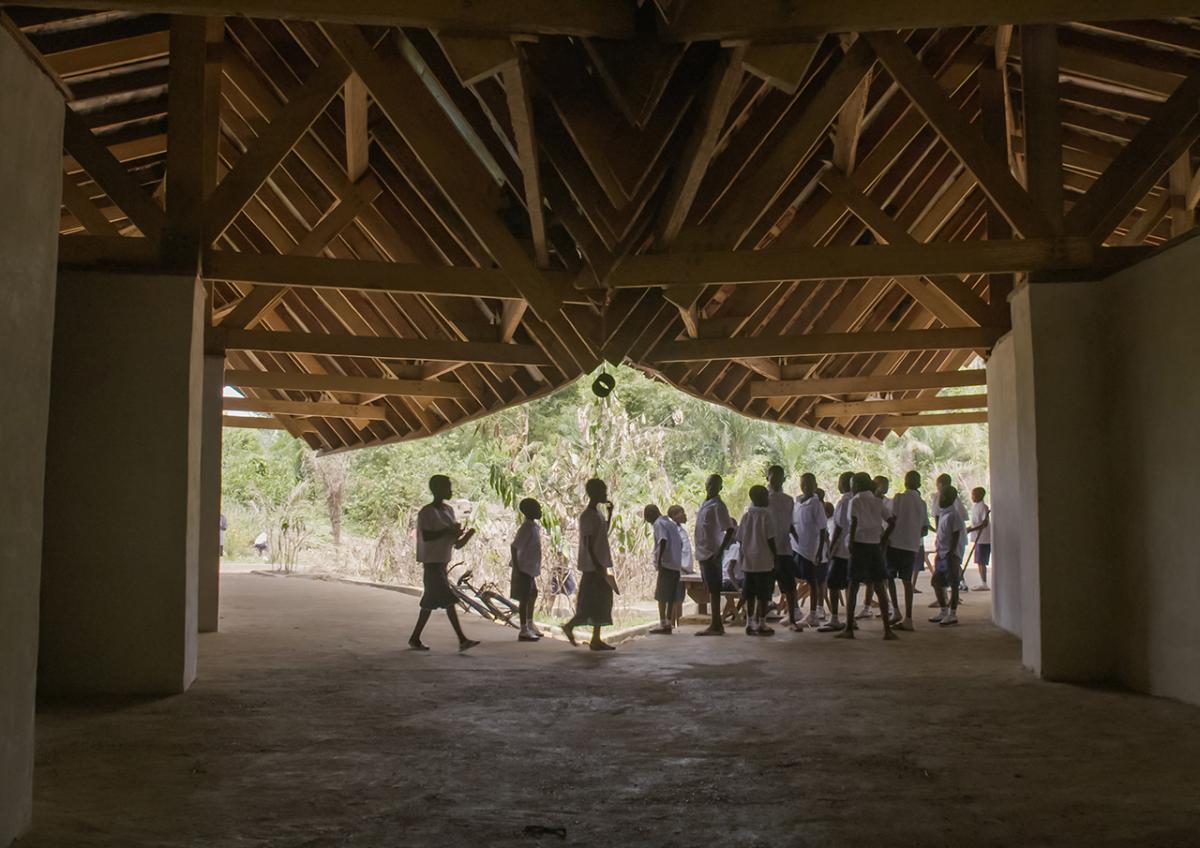
Happy school pupils. Image credit: MASS
With all materials sourced from the region, and 99 percent of materials sourced from within ten kilometers of the site, the construction of Ilima Primary School resulted in hundreds of thousands of dollars spent regionally. Throughout the project, 120 people were employed from the local community, 20 percent of whom were women. Construction also emitted 307,000 kilograms less carbon than the global average for a similarly sized school project.
Author: Bryan Groenendaal
Source: MASS









